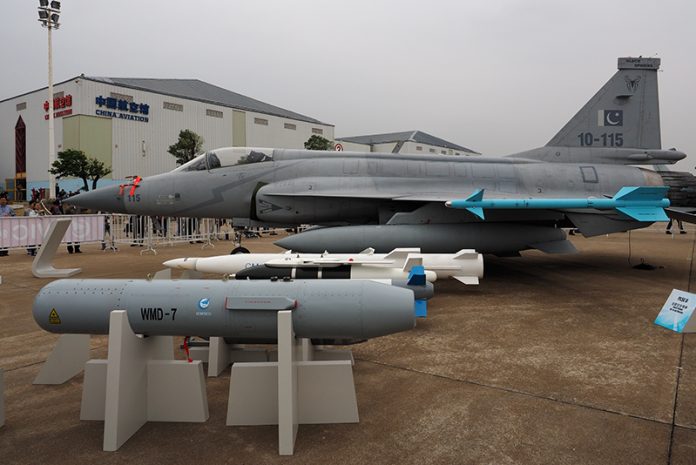Nigeria is inching close to being the first export customer of the jointly developed Pakistan Aeronautical Complex (PAC) and China Chengdu Aircraft Corporation (CAC) JF-17 Thunder fighter aircraft, after the Pakistani government’s Economic Coordination Committee (ECC) approved a $184 million sovereign guarantee covering the production of three JF-17 Thunders for Nigeria under a recently signed contract, the Pakistan Express Tribune reported on 24 October.
Nigeria’s Punch newspaper reported in 2016 that funds had been allocated for the purchase of three aircraft, with other media reports indicating that as much as $54 million had been set aside by 2018 for the acquisition.
PAC had earlier signed a contract to supply 16 aircraft to the Myanmar Air Force (MAF) in 2015, with images of a MAF-destined JF-17 circulating in mid-2017 in anticipation of first delivery later in the year. However, the deal was reportedly suspended over concerns about the Rohingya conflict in Myanmar.
The company is also actively marketing the JF-17 to Malaysia, with the governments of both countries already completed preliminary discussions about a potential sale of the aircraft to fill the Royal Malaysian Air Force (RMAF)’s requirement for a single-engine multirole aircraft.
The JF-17 is an agile fighter that features a delta-wing design and powered by a Russian-made Klimov RD-93 turbofan. It is armed with a GSh-23-2 twin-barrel cannon and equipped with seven external stores points, which can carry over 4,000kg worth of payload including short-medium range air-to-air missiles, anti-radiation and anti-ship missiles, as well as a wide variety of unguided and precision bombs.
Block I and II aircraft produced by PAC at its Kamra facility are now in service with the Pakistan Air Force. Further work is underway to enhance the performance of the aircraft, with the Block III development incorporating upgrades such as an active electronically scanned array (AESA) and possibly the increased use of composite airframe material for a reduced radar cross section, an improved infrared search and track system, and the thrust-vectoring WS13 engine.













